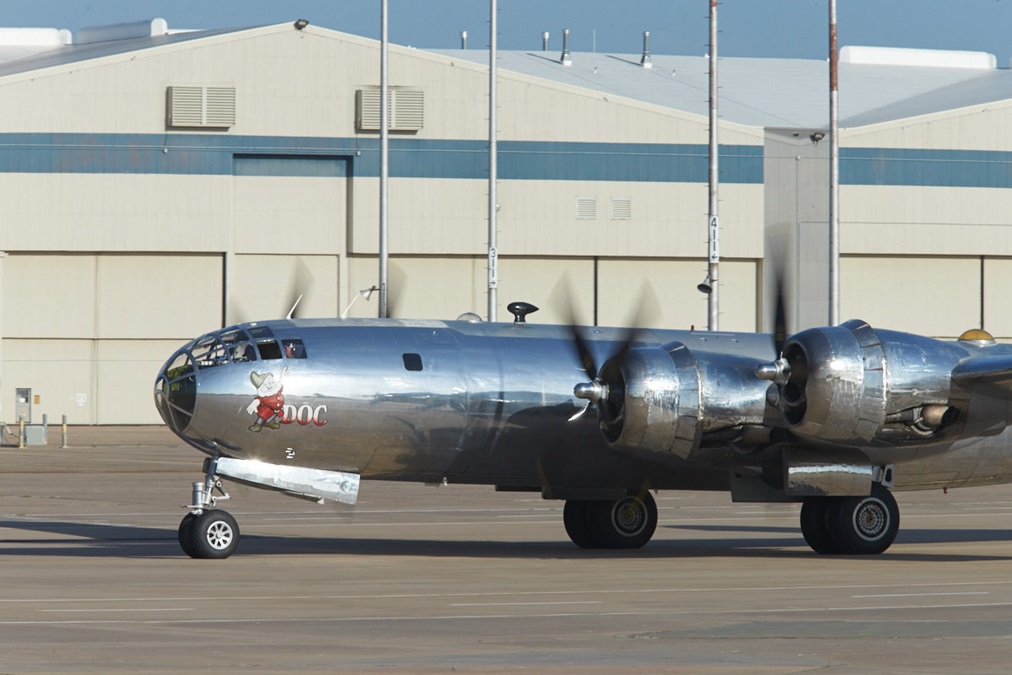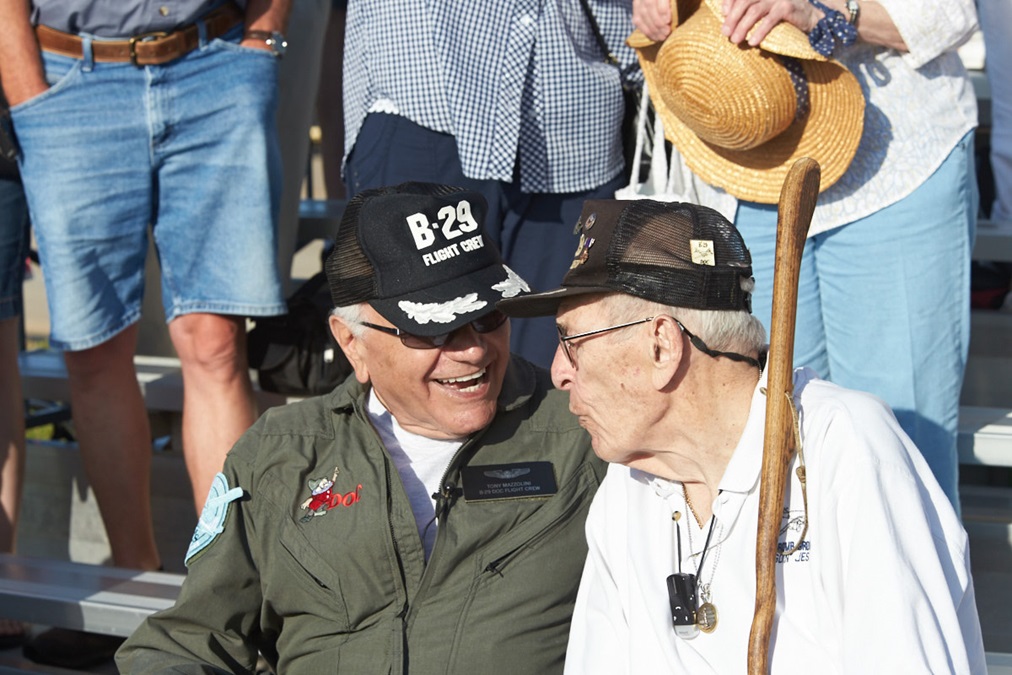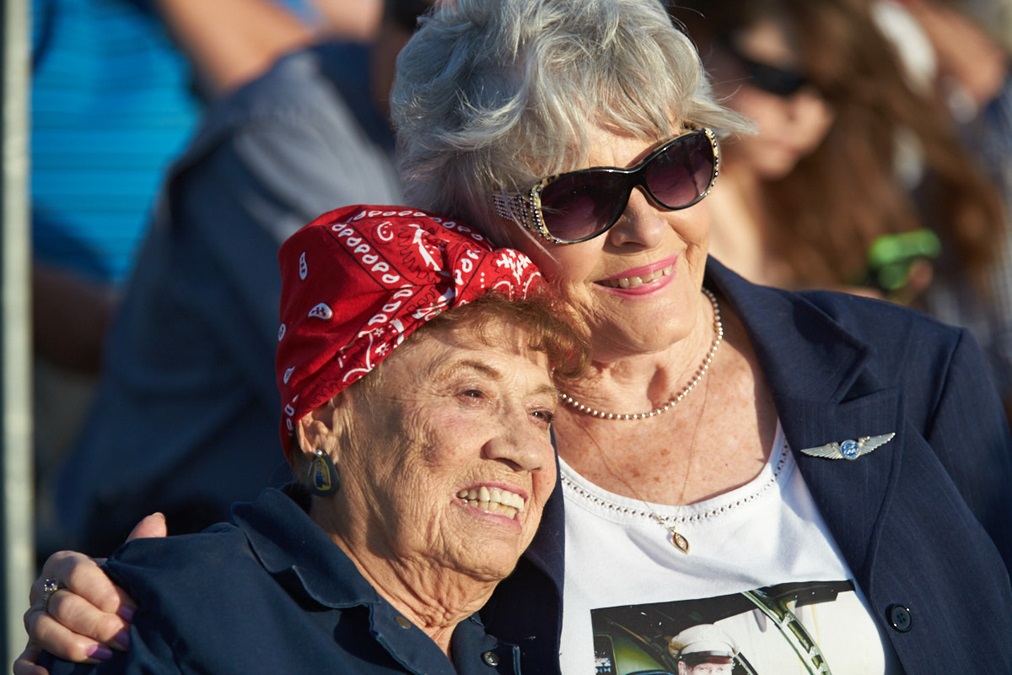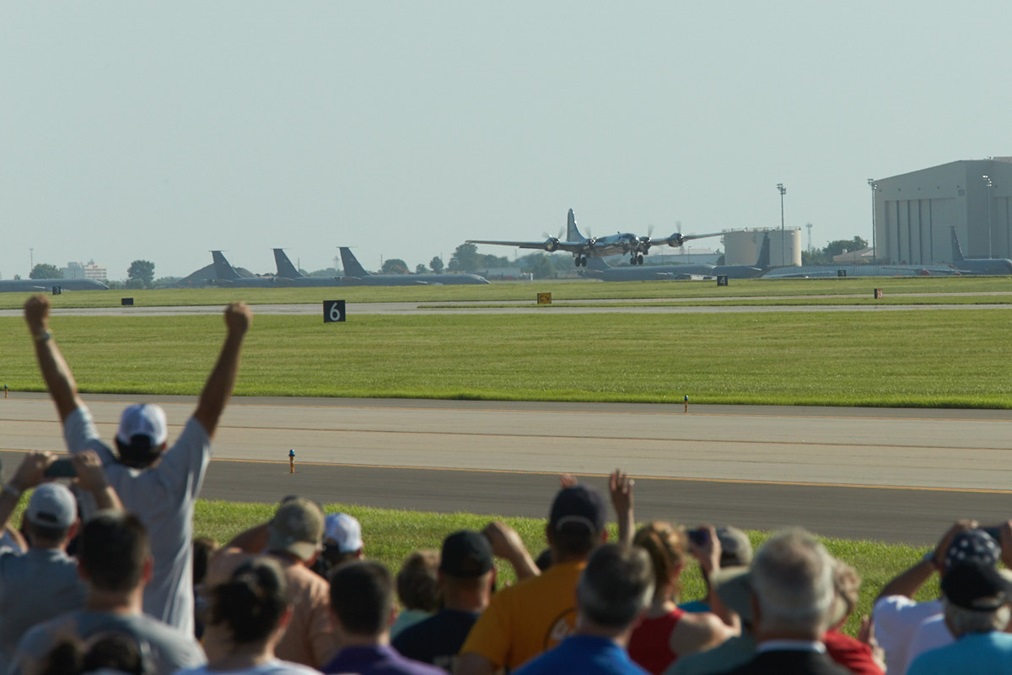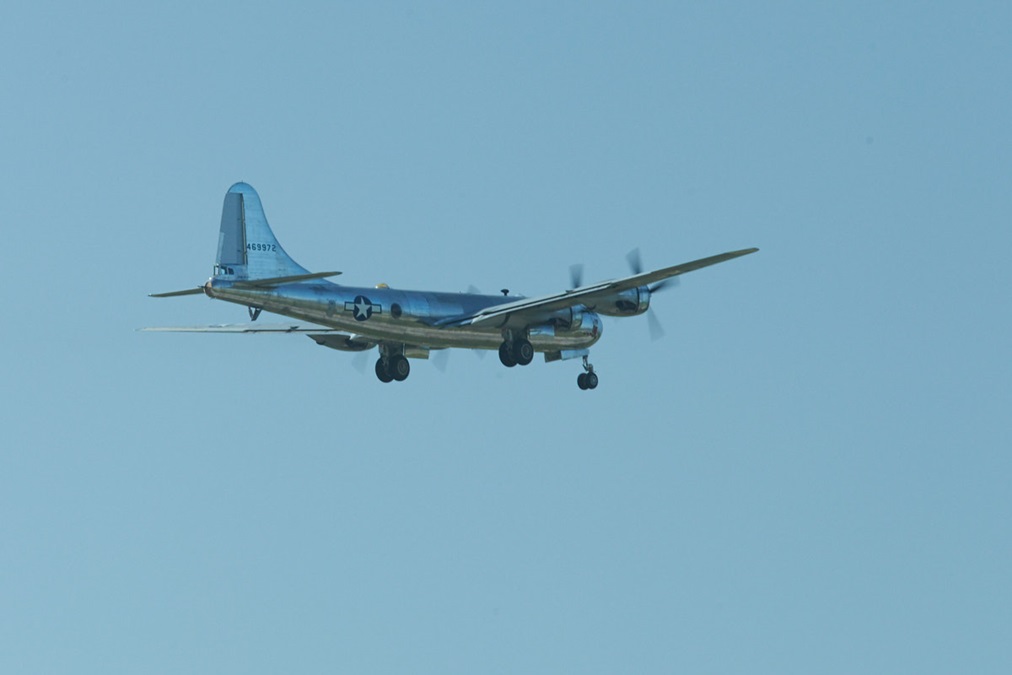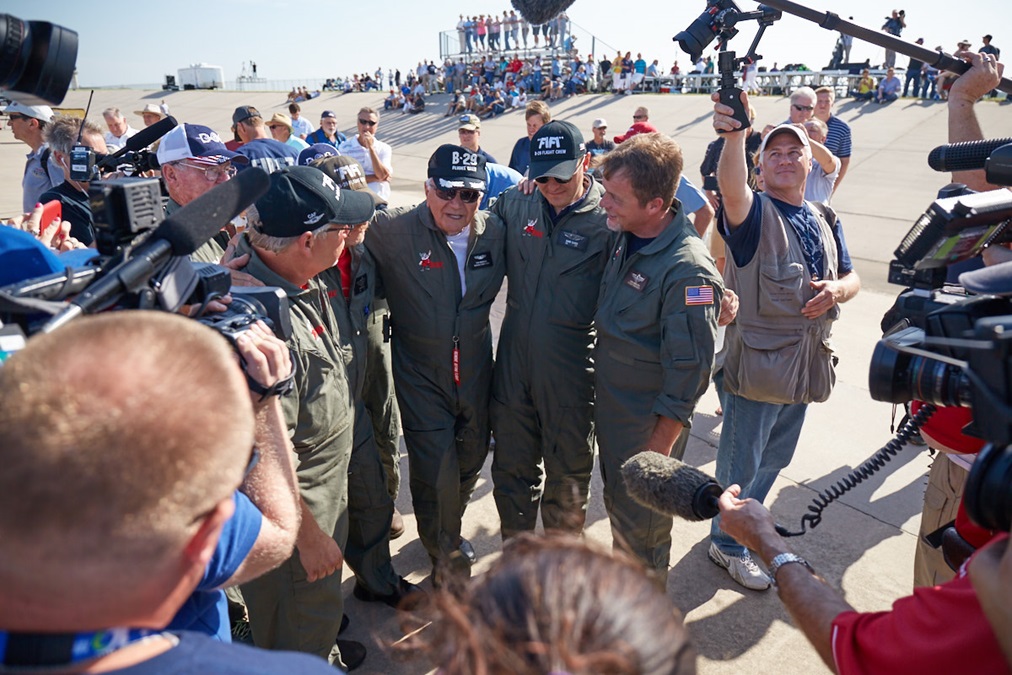'Doc' takes flight at last
Korean War-era bomber soars from Wichita
Brought back to life by hundreds of workers over 16 years, but lately by just 35 to 50 workers, the flight was made by the Commemorative Air Force crew of FiFi, the world’s only other flying B-29 Superfortress. The flight marked a sigh-of-relief milestone in the history of the bomber whose restoration was as troubled as the teething issues of the bomber during World War II. A joke told by those close to the original aircraft suggests that the bomber was built in America but flight-tested above Japan. A goal for many who helped restore the aircraft, a formation flight by Doc and FiFi, was not realized Sunday despite FiFi being en route to Wichita from Colorado at the time of the flight.
The flight was not without drama. An initial takeoff run was aborted when the bomb bay doors opened. Workers on the ground were seen tugging vigorously on a portion of the doors before they were closed again. The second attempt was successful, and the bomber made one trip around the pattern before returning after three “chip” lights went on, two of them weakly. The lights indicate metal chips have been detected in the oil by a magnetized detector. It could mean the engine has excessive wear over a long period of time, or, since these engines were newly assembled, that a problem is occurring that needs immediate attention. Each engine has two chip detectors. The day prior during ground tests a chip light went on but was found to be caused by a wire that had grounded itself against a part of the airplane. The wire was repaired in 10 minutes. Other than that, the bomber flew well, the crew reported.
The first flight was an important step, but many remain before the project reaches its ultimate goal, flights for the public from a museum-quality base in Wichita that could cost $7 million to $9 million. It must next complete 20 hours of flight testing. The FiFi crew is busy with Oshkosh activities, and the Commemorative Air Force has a busy schedule for its bomber. There are limited opportunities for the tests to be quickly conducted. The 20 hours might be worked off in flights from Wichita to Dallas for the convenience of the FiFi crew. A final stage of the aircraft’s restoration is to send it on national tours at altitudes low enough for viewers on the ground to see it, look it up on the Internet, and discover they can contribute to keep it in the air as a flying classroom for future generations, Doc’s Friends officials said. That organization orchestrated the restoration.
It was not entirely a FiFi crew; one crew member was T.J. Norman, who directed daily efforts in Wichita to restore the aircraft and knows not only the aircraft’s systems, but every nut and bolt on it. His knowledge served the FiFi crew as an onboard human databank.
The B-29 was built both at the Boeing factory in Seattle and that company’s Wichita factory. FiFi was built in Seattle while Doc emerged from the same location where it was built. In some cases it was restored by the same people who originally built it, including Connie Palacioz, 92, who riveted the nose in 1944.
The bomber was the dream of Tony Mazzolini of Cleveland, Ohio, who spent 23 years on his effort to rebuild the bomber, this one used only in the Korean War and later, as a way of honoring all veterans. It is also intended, through its museum activities once a museum is built, to educate today’s youth on World War II. He said after the flight that he was pleased the restoration, mostly directed and performed by recent and former Boeing workers, was completed before his death, or as he put it, “...before I run out of runway,”
While Doc was used during the Korean War, nine months of flights are “missing” from its logbooks at about that time. It’s assumed it was a spy plane. It spent the years after that war as a radar test ship, helping to establish defenses during the Cold War. It was delivered to the U.S. Army in 1945.
Look for a story on the volunteers who put Doc back in the air in a future issue of AOPA Pilot. For more visit Doc's website, or follow it on Facebook.

